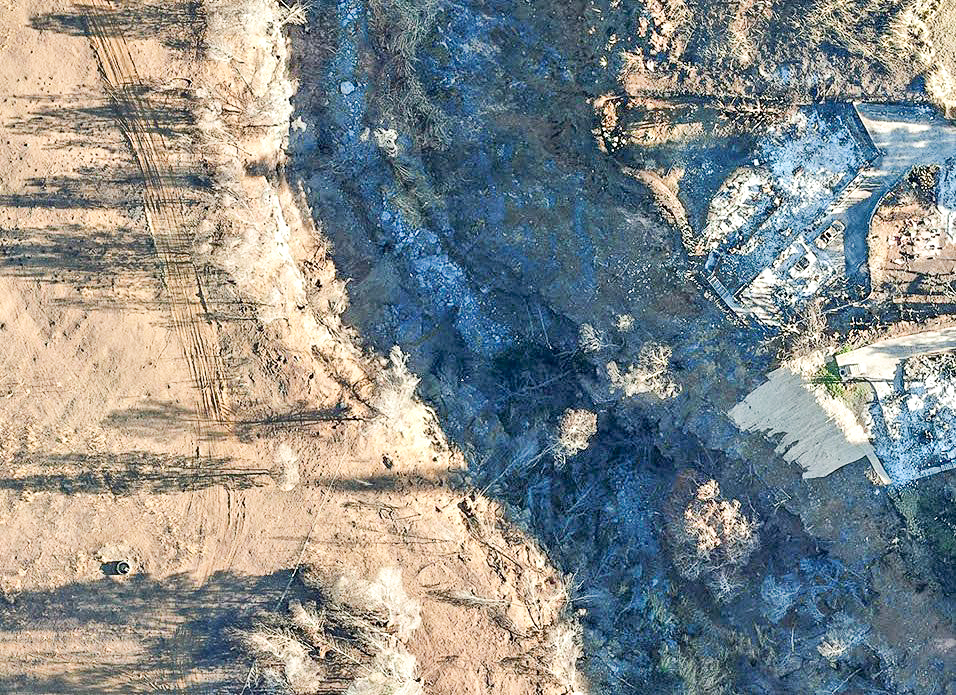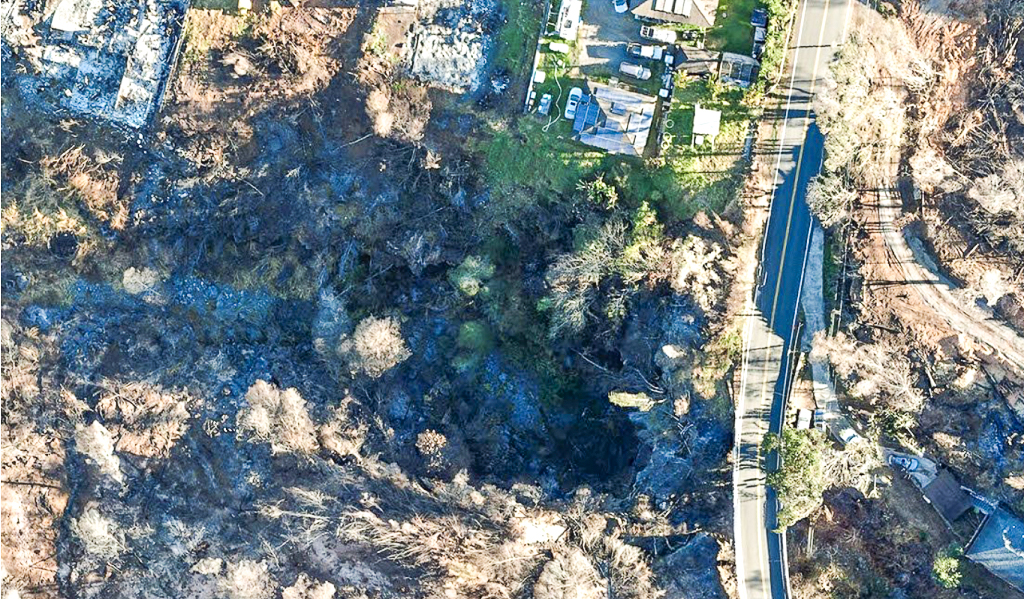Kula Community Watershed Alliance takes action to restore burned lands, prevent erosion

In response to the urgent need for land restoration after the August wildfires devastated neighborhoods in Kula and destabilized already at-risk terrain, a group of more than 80 fire survivors, neighbors, landowners and conservation experts have formed the Kula Community Watershed Alliance.
The alliance is a nonprofit effort to stabilize, protect, restore and maintain the privately-owned lands that burned within Kula’s Pōhakuokalā Gulch and the surrounding watershed.
Earlier this month, the group launched www.kulacommunitywatershed.org and began its first fundraising campaign. Now, the Alliance is taking its first steps to rehabilitate the land.

“Kula Community Watershed Alliance began as a group of concerned landowners who met with county, state and federal officials about the forested areas of Kula that burned in the August wildfires,” said Sara Tekula, acting executive director and one of the organizationʻs founders, in a press release.
“We walked the land and saw that the landscape had lost its vegetative cover and is now prone to severe erosion. There’s a clear need for immediate stabilization, especially in and around our community’s steep gulches and drainage zones, before a major rain event generates a landslide.”

Visits from the US Forest Service’s Burned Area Emergency Response team in late August and the US Department of Agriculture’s Natural Resources Conservation Service damage survey team in September confirmed the urgent need for a soil stabilization effort in Kula.
While the watershed alliance is working in partnership with both organizations and will apply for government funding at every level, the group is also raising funds privately to begin remediation efforts immediately.
Since launching its campaign in early October, Kula Community Watershed Alliance (a partner project of fiscal sponsor Nā Koa Manu Conservation) has raised more than $200,000 toward the stabilization project. All donations directed to the Kula Community Watershed Alliance are tax-deductible, and will support long-term community safety.
“We feel the urgency to act quickly but carefully,” Tekula noted. “In addition to the devastating loss of homes in Kula, hundreds of acres of invasive Black Wattle forest burned, leaving behind an unstable mix of dehydrated soil and wood ash with the consistency of talcum powder that is over two feet deep in some places.
“The seasonal shift to winter weather is beginning, which means that immediate action is needed to prevent further wreckage.”
As a first step, Kula Community Watershed Alliance’s Neighborhood Council – similar to a board of directors – voted to dedicate funds to begin soil stabilization work on two parcels totaling approximately 8 acres, with additional fire mitigation work on 12 more acres within the neighborhood.
With the help of advisors holding decades of experience in ecological restoration and land management, the alliance began enacting its soil stabilization plan this week. The first goal: to cover the burned, unstable soil with woodchips sourced from nearby invasive trees.
“The first loads of wood chips are being generated by trained volunteers through a community green waste program that collects downed branches and trees within the neighborhood,” Tekula said. “Once those run out, contractors will be engaged to remove additional stands of invasive Black Wattle and Eucalyptus nearby, which pose a critical fire hazard in Upper Kula.”
Many options for soil stabilization exist, but the Kula community recognizes a dual need to prevent erosion and become more fire-safe.
“With so much invasive wood available in the immediate area — which contributes to a fire hazard — it was a no-brainer to use that wood to stabilize our soils,” Tekula said. “Everything we need is right here.”
August’s fires emphasized the necessity of active, skillful land management, and Kula Community Watershed Alliance is working to keep the watershedʻs soil in place and out of nearby homes, roads and ultimately the wetlands like Keālia Pond National Wildlife Refuge —into which Pōhakuokalā Gulch drains.
Longer term, the organization aims to bring back a healthy native forest and ensure landscape resilience for generations to come.
Kula Community Watershed Alliance draws advisory support and inspiration from their neighbors at Skyline Hawai’i, an ecotour company also located on Pōhakuokalā Gulch within Haleakalā Ranch.
Over the past 20 years, Skyline’s restoration project successfully converted a 40-acre zone of invasive Eucalyptus forest into a completely native ecosystem home to over 30 species of native Hawaiian plants and trees. The project, which converts an abundance of Eucalyptus into log erosion barriers and wood chips, has completely stopped the run-off of soil sediments from their property into the gulch.
“Landowners in the burned areas of Kula have seen what is possible and decided that they cannot allow a second environmental disaster to happen in their backyards,” Tekula said. “We are energized to begin the work ourselves, sourcing our materials right where we live, and relying on the expertise of experienced local advisors and contractors.”
New members are invited to join by attending Kula Community Watershed Alliance’s weekly meetings, Thursday evenings at 6 p.m. via Zoom.
To learn more and donate, visit: www.kulacommunitywatershed.org









